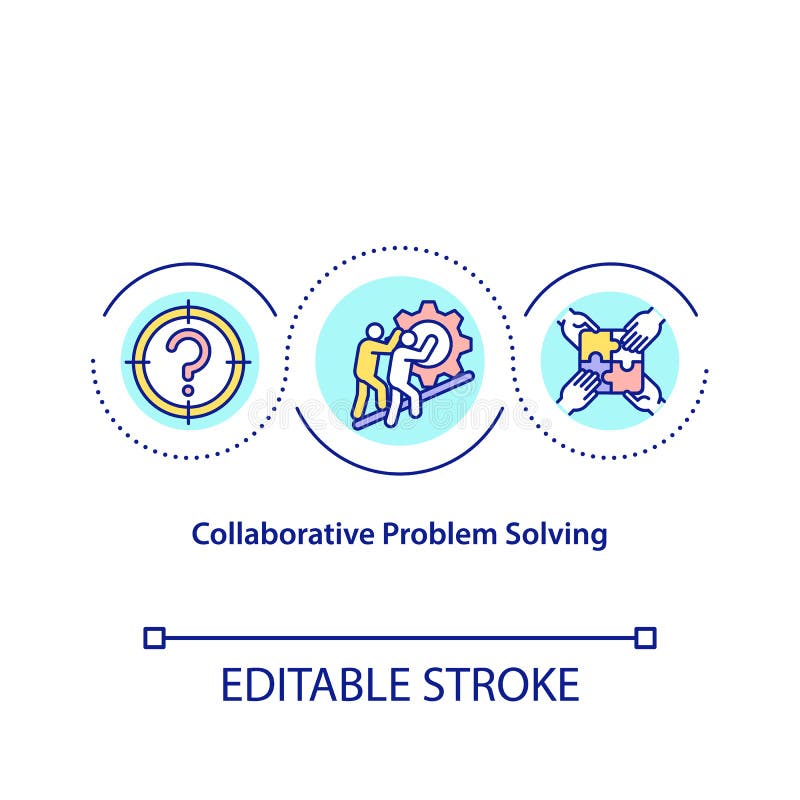Collaborative Work Efficiency in Problem Solving
Collaborative work efficiency refers to the effectiveness of a group working together to solve problems. It is crucial across various fields, including business, education, healthcare, and technology. The ability to work collaboratively can enhance problem-solving capabilities and overall productivity.
Definition of Collaborative Work Efficiency
Collaborative work efficiency is the measure of how well a group can work together to achieve a common goal. This includes the speed and quality of problem-solving. Effective collaboration often leads to innovative solutions and improved outcomes.
Importance in Various Fields
In business, collaborative work can lead to successful project completions. In education, it encourages deeper learning through peer interaction. In healthcare, teamwork enhances patient care. In technology, collaboration drives innovation and product development.
Theoretical Framework
Theoretical frameworks provide vital information about collaborative work dynamics.
Social Interdependence Theory
This theory marks how individuals’ outcomes are linked to the actions of others. Positive interdependence encourages cooperation, while negative interdependence can lead to competition.
Groupthink
Groupthink occurs when the desire for harmony in a group leads to poor decision-making. Members suppress dissenting viewpoints, resulting in flawed solutions.
Collective Intelligence
Collective intelligence refers to the shared knowledge and problem-solving ability that emerges from collaborative efforts. It harnesses the strengths of diverse individuals.
Factors Influencing Collaborative Work Efficiency
Several factors affect how efficiently a group collaborates.
1. Communication
Open and clear communication channels are vital. Effective tools include:
- Instant messaging
- Video conferencing
- Collaborative platforms like Slack and Microsoft Teams
2. Group Composition
Diverse teams enhance problem-solving. Varied skills and backgrounds contribute to richer discussions. Defined roles, such as leader, facilitator, note-taker, and timekeeper, streamline processes.
3. Technology and Tools
Collaborative software like Google Workspace, Trello, Asana, and Miro facilitates teamwork. Technology has transformed remote collaboration, making it more efficient.
4. Trust and Relationship Building
Trust is essential for a collaborative environment. Building trust can involve:
- Team-building activities
- Transparency
- Accountability
5. Conflict Resolution
Effective conflict management is crucial. Strategies include active listening, mediation, and compromise. Unresolved conflicts can severely impact group efficiency.
Stages of Collaborative Problem Solving
Collaborative problem solving involves several stages.
1. Problem Identification
Defining the problem accurately is crucial. Techniques include discussions and surveys. Framing the problem correctly sets the stage for effective solutions.
2. Idea Generation
Brainstorming techniques promote creativity. Methods include:
- Mind mapping
- Round-robin brainstorming
- Nominal group technique
3. Evaluation and Selection
Evaluating potential solutions is vital. Criteria include feasibility, impact, and required resources. Decision-making techniques involve consensus, voting, and multi-voting.
4. Implementation
Planning and executing the chosen solution requires clear roles. Assigning responsibilities ensures accountability and clarity.
5. Reflection and Learning
Evaluating outcomes is essential for growth. Feedback and continuous improvement help refine future collaborative efforts.
Benefits of Collaborative Work Efficiency
Collaborative work efficiency offers numerous benefits.
Enhanced Creativity and Innovation
Diverse perspectives lead to innovative ideas. Collaboration encourages out-of-the-box thinking.
Increased Productivity
Working together can speed up problem resolution. Teams can tackle challenges more effectively than individuals.
Improved Team Morale
Collaborative efforts often boost morale. Team members feel valued and engaged, leading to higher job satisfaction.
Challenges to Collaborative Work Efficiency
Despite its benefits, collaborative work faces challenges.
Time Constraints
Scheduling conflicts can hinder collaboration. Limited time can lead to rushed decisions.
Differences in Work Styles
Varied communication preferences and work styles can create friction. About and adapting to these differences is crucial.
Potential for Social Loafing
Social loafing occurs when individuals contribute less in a group. This can undermine overall group performance.
Case Studies
Real-world examples illustrate successful collaborative problem-solving.
Business
Cross-functional teams in product development have shown success. Diverse expertise leads to innovative products and efficient processes.
Education
Collaborative learning in classrooms enhances engagement. Students benefit from peer interactions and shared knowledge.
Healthcare
Interdisciplinary teams improve patient care. Collaboration among healthcare professionals leads to comprehensive treatment plans.



venkat
December 13, 2018 at 10:51 amis there any short cut method…. i’m unable to apply any short cut for this…..